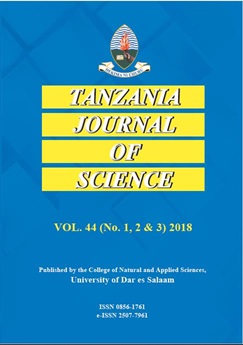DNA Barcoding Reveals Occurrence of Cardiocephaloides sp. (Digenea: Strigeidae) Infecting the Great Cormorant Phalacrocorax carbo (L. 1758) in Mwanza Gulf, Lake Victoria
DOI:
https://doi.org/10.4314/tjs.v49i1.9Abstract
Cormorants (Pelecaniformes) are widely distributed worldwide, occurring as coastal birds in inland waters and marine environments, and have been implicated in the transmission of some aquatic parasites. As such, the objective of the present work was to investigate the occurrence and morphological variations in Cardiocephaloides (Digenea: Strigeidae), parasites of the great cormorant Phalacrocorax carbo. The Cardiocephaloides specimens used for molecular analysis (DNA barcoding (cox1) region) were obtained from the intestines of the great cormorants collected from Mwanza Gulf in Lake Victoria. Morphological examination of Cardiocephaloides specimens showed the possible co-existence of four morphospecies belonging to the genus Cardiocephaloides. However, detailed analyses of the cox1 sequences, phylogeny and haplotypes revealed that all four morphospecies belonged to a single unknown species of Cardiocephaloides. This paper provides the first report on the great cormorant Phalacrocorax carbo, serving as the definitive host for Cardiocephaloides in freshwater systems. The findings also reveal that the diversity of Cardiocephaloides in Africa is higher than earlier reported. Moreover, it highlights the need for more research in Tanzania to divulge snail and fish species involved in the life cycles of digenean species occurring in birds and other vertebrates in aquatic environments.
Keywords: Digenean trematodes; Strigeidae; Phalacrocorax carbo; Cardiocephaloides; cox1


